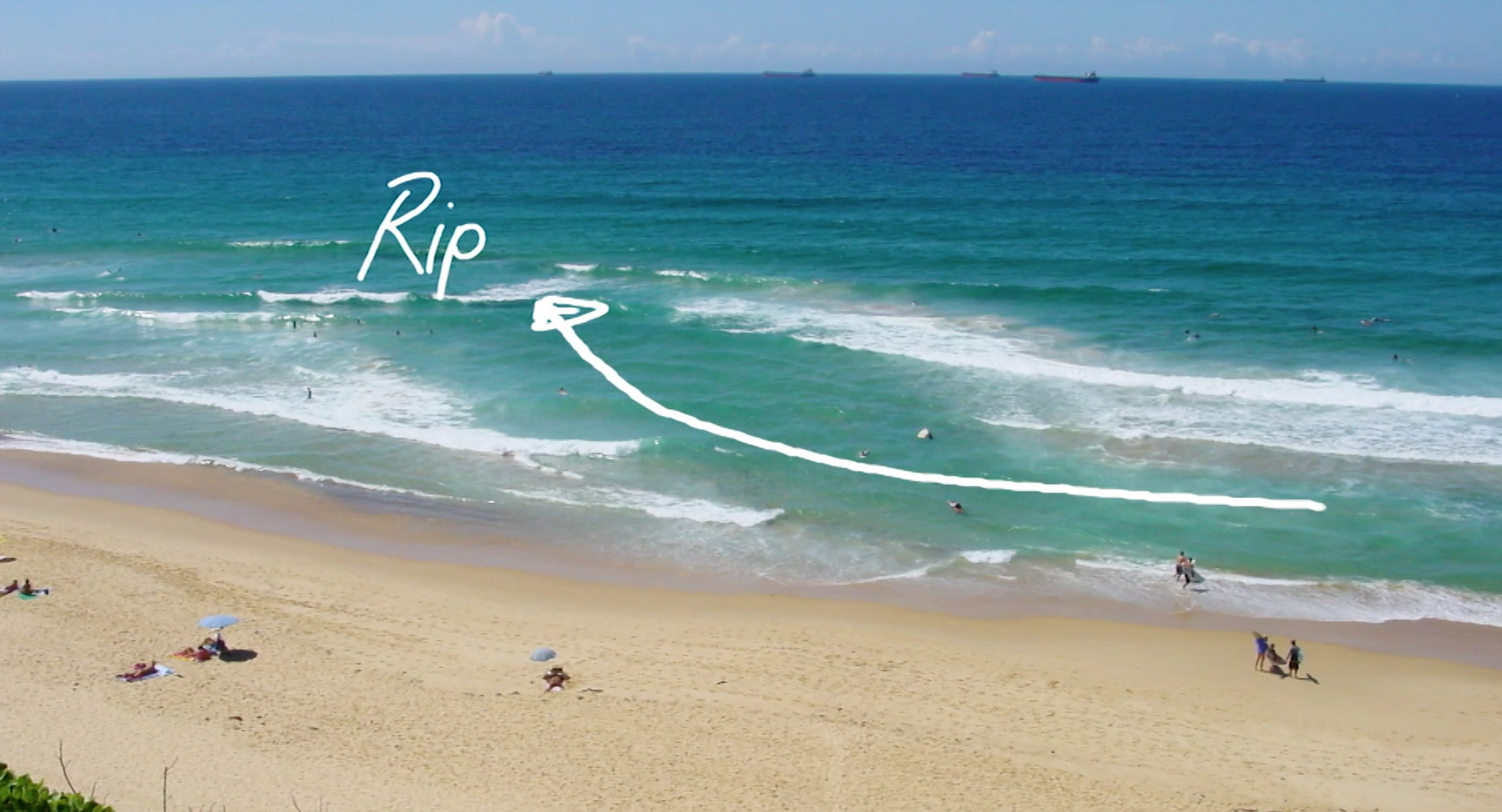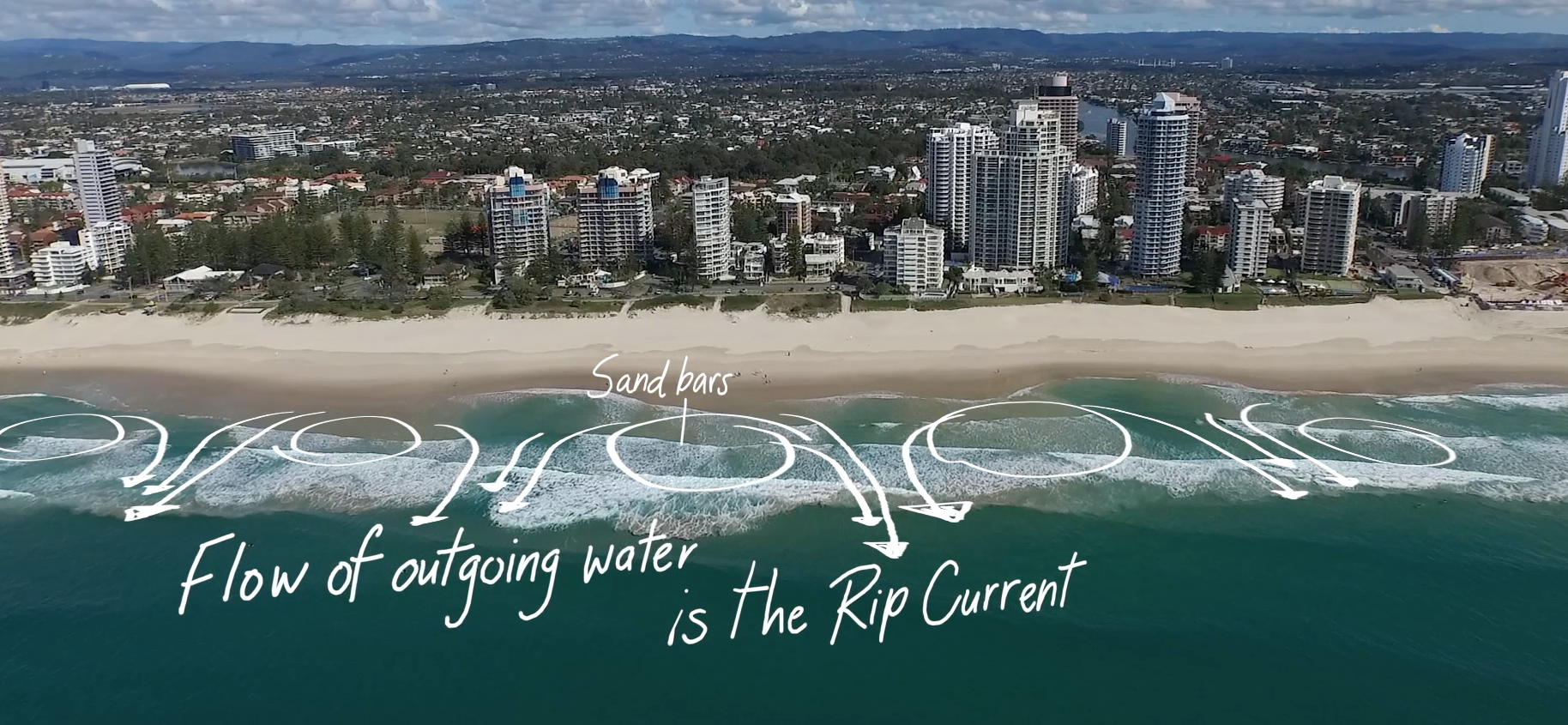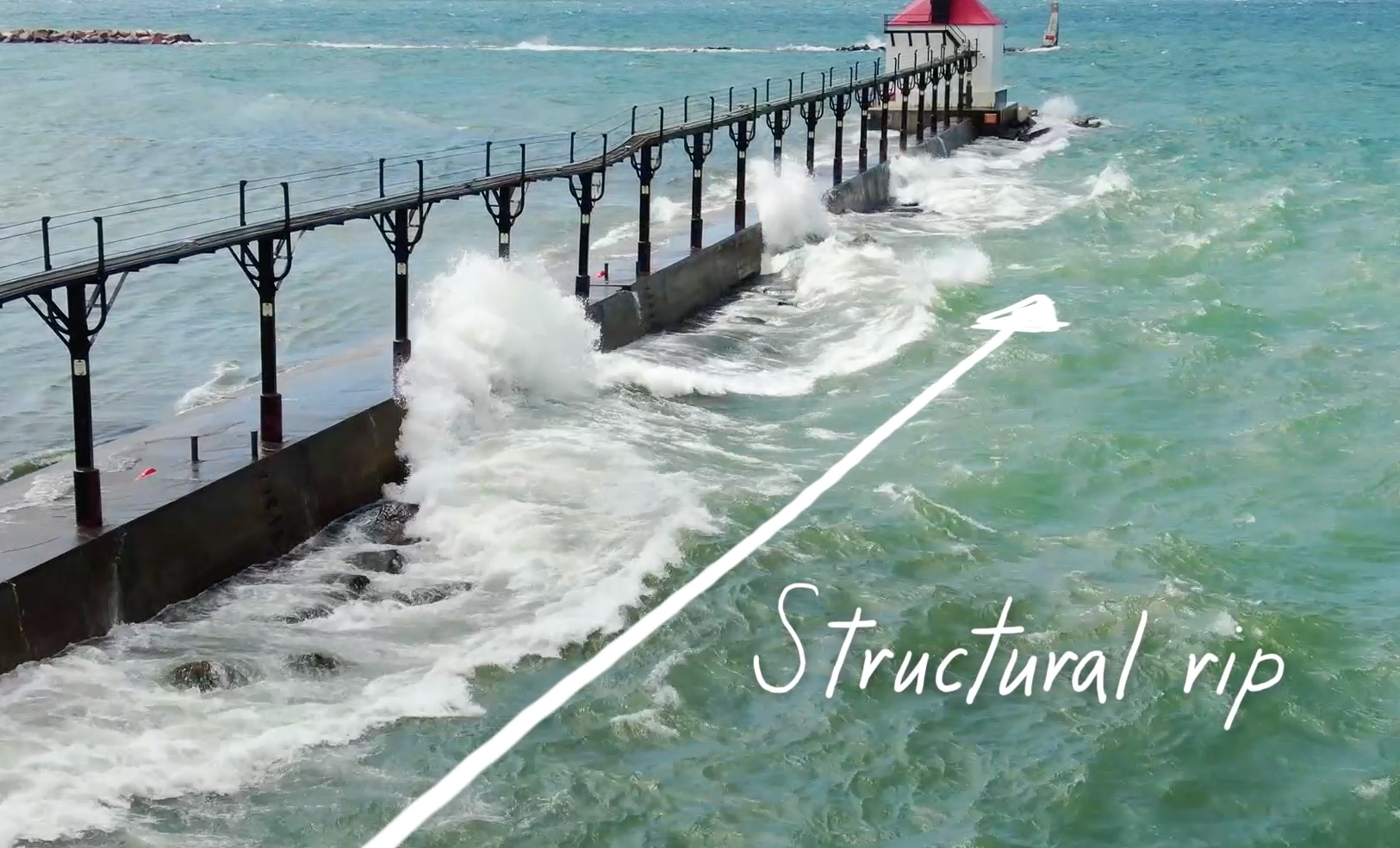Beach time! A day at the beach is summer perfection. The sun sparkling on the water. Sand between your toes. A hint of a breeze. Hanging with friends and family. Whether you are walking along the shore, wading up to your knees, splashing in the waves, or swimming, there is something about the water that soothes the soul.
If asked about being safe at the beach you probably think about applying sunscreen and staying hydrated. If you had to disclose your deepest fear about the water, sharks probably have a starring role. Silent killing machines coming out of the deep to grab unsuspecting swimmers.
You’d be half right. The biggest killer on the beach is a silent killing machine that comes out of the deep to grab unsuspecting swimmers, but 99.9% of the time that killer is rip currents, not sharks.
Rip currents are the #1 safety issue on U.S. beaches.

Over 50,000 people a year need to be rescued from rip currents and over 100 people die. By contrast, in 2020 there were 33 unprovoked shark attacks in the U.S. and 3 fatalities.
What are rip currents?
Rip currents are a flat dark path of water heading rapidly away from shore. Rip currents form when large amounts of water are being dumped on the shore in waves and rough surf. The water has to go somewhere, so it forms a path, a strong current, that takes the water back out. Rip currents can also occur near piers and jetties and are called structural currents. The waves slam up against the structure and the water is forced back in a rapidly moving path. Rip currents and structural currents looks like a flat path among the waves and whitewater. Rip currents are deceptive because they look like calm, safe water where it is safer to swim, but this is a deadly illusion, rather like putting bunny ears on a shark. Rip currents can move faster than an Olympic swimmer, so if you try to swim back to shore against the rip current the rip will win.
Where do rip currents occur?
A good rule of thumb is that if you are at the beach, rip currents may be present and you need to know how to identify and escape a rip. Beaches on small lakes and rivers are unlikely to have the big wave action that can create deadly rip currents, but wherever there is a big body of water, there will be rip currents. Ocean beaches – definitely rip current territory. The surprise location in the U.S. is the Great Lakes. The Great Lakes have had over 940 drownings since 2010, with 2020 the most deadly year on record. Lake Michigan is the most deadly body of water in the U.S., with more than half of all Great Lakes drownings. Half of those drownings occur near jetties and piers.
How do you escape a rip current?
The most important thing to remember about rip currents is that they will not pull you under the water. Rip currents will pull you away from shore, which is scary, but once you know how to escape a rip current, if you stay calm, you will almost certainly survive.
Rip currents can flow straight out from shore, they can flow diagonally, or they can move in a circle. There are different strategies you can use to escape any type of rip current. The first strategy is to float or tread water until the rip releases you. Put your hand in the air to signal for help. Remember, the rip won’t pull you under, so no need to panic. If you can tread water or float, you have time to be rescued. The best way to float on your back is with arms and legs spread wide, like a starfish. Spreading your body across the surface helps you stay on top of the water.
Rip currents are powerful when they are near shore, but as they reach deeper water they lose power. This gives you a chance to escape the rip current and return to shore. Once you feel the current slow, or if you are a strong swimmer, try swimming parallel to the shore or towards waves and whitewater. Once you are out of the pull of the rip current you can swim back towards shore or shout for help. Never swim against the rip current. They are too powerful and you will become exhausted very quickly, putting you at high risk of drowning.
If the current is moving in a circle, it will take you towards shore naturally. If this happens, swim towards waves and whitewater and then back to shore. It can take several minutes for a circular rip current to take you back to shore, so remember the main rip current escape strategy – float or tread water and signal for help.
How do you avoid rip currents?
Rip currents can develop suddenly, so the most important thing you can do is to swim near a lifeguard. If you swim at a beach where a lifeguard is on duty, your chances of drowning are only 1 in 18 million. Lifeguards are your best chance for enjoying the beach safely.
Obey the flags and signs. If you are swimming at an unguarded beach or outside of lifeguarding hours, check the flags and signs. If the flag is red, or signs warn of regular dangerous currents, don’t go in. Check the local weather forecast before you head to the beach, specifically for rip current forecasts. The National Ocean Service should be your first stop.
Prepared beach goers take 5 minutes to scan for rip currents every time they hit the beach. If you see a flat calm path of water, it’s a rip current. Stay near the waves and whitewater. Never go in the water near jetties and piers. Even if a rip or structural current doesn’t grab you, there is a chance the waves will pound you against the wood, metal, or concrete like a deadly washing machine.
What if you see someone drowning?
If you see someone waving their arms and calling for help, notify a lifeguard or call 911 immediately. Calling or signaling for help means the person is in distress but may still be able to help rescuers by grabbing a life ring or a rope.
If someone is actively drowning, they won’t be waving and they won’t be calling for help – they are in immediate danger and their body is focused on staying alive. They are minutes, or seconds, from death.
Notify a lifeguard or call 911 immediately if you see any of these signs:
Drowning people are vertical in the water. Their arms are pressing down on the surface to bring them above water, as if they are climbing a ladder, or their arms are flailing backwards like a windmill. Their mouths are facing upwards, trying to get breath, but their faces are rarely out of the water long enough to take a good breath. The best way to tell if someone is drowning, is ask ‘are you OK?’ If they can’t answer, they are drowning.
If there is no lifeguard or 911 can not respond quickly enough and you need to rescue someone, take something that floats. Keep it between you and the victim so they don’t pull you under too. Life rings, life jackets, coolers – these all float. If you are on a pier or jetty, extend a pole, an oar, or a tree branch.
What action should you take right now?
Watch Rip Current Rescues, the first documentary on rip current survival. Stories of real rip current rescues help you to understand rip currents, know how to spot them, and what to do if you ever find yourself in the grip of a rip. https://vimeo.com/ondemand/ripcurrentrescue
The beach is a magical place. Understanding rip currents and knowing how to escape rip currents will keep your beach escapes magical rather than a place of loss and tragedy.



